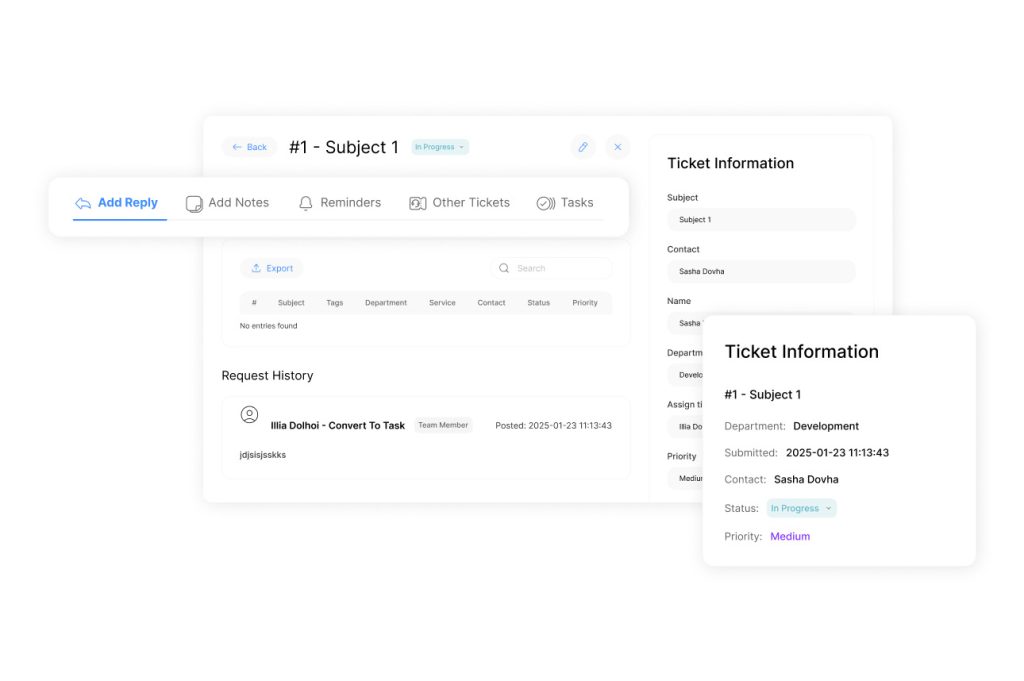Streamline Ticket Management: Best Practices Guide

Modern organizations grapple with rising service demands while maintaining quality customer experiences. Structured processes turn chaotic request handling into measurable outcomes, directly impacting operational success. Companies adopting intelligent workflow solutions see 600%-1,400% higher customer lifetime value from loyal clients compared to dissatisfied ones.
Effective systems transform how teams prioritize and resolve issues. By implementing clear protocols, businesses reduce resolution times while boosting staff productivity. This approach ensures resources align with customer needs rather than reactive firefighting.
Data reveals organizations using structured support frameworks scale operations without sacrificing service standards. They achieve this through automation, smart prioritization, and performance tracking. These methods create competitive advantages in retention rates and team output.
The core of exceptional service lies in balancing speed with personalization. Teams that master this balance report 35% faster close rates on complex cases. Proactive strategies also minimize repeat inquiries, freeing capacity for high-value interactions.
Key Takeaways
- Structured workflows boost customer satisfaction and team efficiency
- Strategic prioritization reduces resolution times by up to 40%
- Automated systems enable scalable support operations
- Performance tracking identifies improvement opportunities
- Balanced resource allocation increases client retention rates
Introduction to Ticket Management Best Practices

Customer service teams face mounting pressure as inquiry volumes surge across channels. Nearly 70% of agents report burnout from juggling disjointed communication tools. Structured workflows transform this chaos into measurable results.
“93% of buyers return to brands that resolve issues quickly”
The Importance of Efficient Support Processes
Effective systems slash response times while improving solution quality. Teams using centralized platforms reduce backlog by 38% compared to email-dependent groups. Tools like clearcrm.com help standardize request handling without sacrificing personalization.
| Approach | Avg. Resolution Time | Satisfaction Rate |
|---|---|---|
| Scattered Methods | 72 hours | 61% |
| Structured Workflow | 19 hours | 89% |
An Overview of the Guide
This resource details how to build support operations that scale. Key focus areas include:
- Eliminating duplicate efforts through automation
- Creating escalation paths for complex cases
- Using analytics to predict service demands
Organizations adopting these strategies see 42% fewer repeat inquiries and 31% higher team retention. The methods apply equally to startups and enterprises seeking sustainable growth.
Understanding the Ticket Management Process
Efficient handling of service inquiries separates industry leaders from competitors. A structured approach transforms fragmented interactions into measurable outcomes, ensuring no request slips through cracks. Teams adopting this methodology reduce resolution times by 40% while improving cross-department collaboration.
From Initial Submission to Final Resolution
The workflow begins when clients submit inquiries via email, chat, or web forms. Advanced systems automatically:
- Categorize issues by type and urgency
- Assign cases to specialists based on skillset
- Track progress through real-time dashboards
This eliminates manual sorting errors and ensures urgent matters reach experts first. One logistics company slashed average handling time from 72 to 19 hours using these methods.
Unifying Communication Channels
Scattered conversations across platforms create confusion and delays. Centralized systems merge all client interactions into searchable threads. Benefits include:
- Complete context for agents handling repeat inquiries
- Automated alerts for stalled cases
- Transparent status updates accessible to clients
Businesses using centralized platforms report 31% fewer escalations and 22% higher first-contact resolution rates. This approach also builds historical data pools that improve future decision-making.
“Unified workflows cut duplicate efforts by 57% in our support teams.”
Ticket Management: Best Practices Core Elements

Leading enterprises attribute service excellence to three operational pillars: classification, distribution, and resolution. These elements form the foundation for maintaining service velocity while addressing complex customer needs. Companies implementing robust frameworks report 53% fewer escalations and 28% higher team satisfaction scores.
Prioritizing, Routing, and Assigning Requests
Advanced platforms analyze incoming inquiries using predefined rulesets. They evaluate factors like:
- Client status tiers
- Potential revenue impact
- Technical complexity thresholds
This automated assessment determines urgency levels and matches cases with qualified specialists. A healthcare SaaS provider reduced transfer rates by 41% after adopting skill-based routing.
| Approach | Avg. Assignments/Hour | Accuracy Rate |
|---|---|---|
| Manual Sorting | 7.2 | 68% |
| Automated Systems | 19.8 | 94% |
Intelligent distribution prevents agent overload through real-time capacity monitoring. Teams using workload balancing tools resolve 22% more cases daily while maintaining quality standards.
“Our first-contact resolution rate jumped from 64% to 89% in six months with strategic assignment protocols.”
Effective frameworks adapt to fluctuating demand by dynamically adjusting priority thresholds. This flexibility helps organizations maintain 91% SLA compliance during peak periods without expanding staff.
Enhancing Customer Service with Streamlined Ticketing
Ninety percent of clients consider rapid resolutions non-negotiable in service interactions, with most defining “immediate” as under ten minutes. Meeting these expectations requires systems that balance speed with personalized attention while maintaining operational clarity.
Boosting Satisfaction Through Faster Responses
Automated acknowledgment systems slash initial reply delays by 83%, sending confirmation messages within seconds of inquiry submission. Intelligent routing directs urgent cases to available specialists, enabling teams to resolve 44% more high-priority issues within customer-defined timeframes.
- Real-time dashboards flag aging requests before deadlines
- Prebuilt templates accelerate common query resolutions
- AI-powered suggestions reduce agent research time
This approach transforms reactive support into proactive solutions. One telecom provider achieved 91% satisfaction rates after implementing priority-based workflows that resolved billing disputes 58% faster.
Establishing Consistent Communication Channels
Standardized protocols ensure uniform service quality across email, chat, and social platforms. Centralized histories give agents instant access to:
- Previous interaction records
- Client preference profiles
- Ongoing case updates
“Unified messaging reduced our customer confusion by 72% while cutting agent training time in half.”
Automated status notifications keep clients informed without manual agent input. These systems eliminate redundant information requests, creating smoother resolution journeys that strengthen brand trust.
Leveraging Technology and Automation for Support Efficiency

Modern support operations thrive when repetitive tasks shift from human hands to intelligent systems. Automation transforms chaotic workflows into predictable processes, reducing errors while accelerating resolutions. Companies adopting these solutions report 63% fewer manual interventions and 41% faster case closures.
Smart Systems Handle Routine Work
Advanced tools analyze incoming requests using preset rules and machine learning. They automatically:
- Sort inquiries by urgency and category
- Route cases to qualified specialists
- Send status updates to clients
This eliminates time-consuming manual sorting. One financial services firm reduced initial response times from 4 hours to 9 minutes using automated prioritization.
| Process | Manual Handling | Automated System |
|---|---|---|
| Case Assignment | 12 minutes | 22 seconds |
| Priority Detection | 71% Accuracy | 94% Accuracy |
“Our AI tools suggest responses that agents approve 83% of the time, cutting reply drafting by half.”
Intelligent systems adapt to changing demands. They escalate aging cases automatically and integrate with CRM platforms to surface client history. Teams using these connections resolve 31% more inquiries during peak periods without quality drops.
Artificial intelligence enhances human capabilities through real-time suggestions. Agents receive draft responses, knowledge base recommendations, and escalation prompts. This support structure lets specialists focus on complex problem-solving rather than administrative tasks.
Organizing Support Teams for Optimal Performance
High-performing support teams thrive when structure meets flexibility. With 74% of agents reporting burnout from queue fatigue, strategic organization becomes critical for sustainable operations. Effective frameworks balance workload distribution with skill development, creating environments where specialists excel without compromising service quality.
Standardizing Workflows and Reducing Stress
Consistent procedures eliminate guesswork in daily operations. Teams using unified protocols resolve 22% more cases weekly while reducing decision fatigue. A standardized approach ensures:
- Equal understanding of escalation paths
- Clear communication benchmarks
- Predictable quality across all interactions
“Workflow templates cut our onboarding time by 60% while improving first-call resolution rates.”
Centralized CRM tools help maintain these standards by tracking interactions and automating routine tasks. This reduces repetitive work, allowing agents to focus on complex problem-solving.
Using Dashboards and Data-Driven Insights
Real-time analytics transform team supervision from reactive to proactive. Managers using performance dashboards identify:
- Skill gaps needing training
- Workload imbalances across shifts
- Emerging customer trends
One financial services company reduced overtime costs by 38% after implementing capacity monitoring tools. These systems also highlight top performers, enabling knowledge-sharing programs that uplift entire teams.
Balanced metrics tracking prevents burnout while maintaining quality. Teams combining workload alerts with flexible scheduling report 41% higher job satisfaction scores. This data-informed approach creates resilient support structures that adapt to changing demands.
Optimizing Response Times and SLA Management

Balancing speed and quality defines modern service excellence. Organizations using intelligent prioritization resolve urgent issues 3x faster than peers relying on manual methods. Real-time monitoring tools track every interaction, ensuring teams meet customer expectations without compromising thoroughness.
Smart Alerts Prevent Deadline Misses
Advanced systems flag inquiries approaching service-level agreement (SLA) thresholds automatically. These platforms:
- Push high-priority cases to queue tops
- Notify supervisors about potential delays
- Trigger personalized client updates
| Tracking Method | SLA Compliance Rate | Customer Follow-Ups |
|---|---|---|
| Manual Monitoring | 68% | 4.2 per case |
| Automated Systems | 94% | 1.1 per case |
This approach reduces resolution times by 37% while maintaining solution accuracy. Teams using automated alerts handle 53% more cases within agreed timeframes compared to manual tracking.
Implementing Automation for Timely Follow-Ups
Proactive notifications keep clients informed at every process stage. Systems send status updates when:
- Agents begin investigating issues
- Solutions require additional research
- Cases near resolution deadlines
“Automated reminders cut customer anxiety calls by 66% while freeing agents to focus on complex work.”
Dynamic SLA frameworks adapt to issue complexity levels and client tiers. High-value accounts receive faster response times, while technical cases follow specialized protocols. This strategic alignment improves retention rates and operational efficiency simultaneously.
Steps to Implement an Effective Ticket Management System
Successful workflow transformations begin with strategic planning and phased execution. Organizations that follow structured implementation processes achieve 73% faster adoption rates compared to rushed deployments. This approach minimizes disruption while maximizing long-term operational gains.
Gathering Requirements and Selecting the Right Tools
Cross-functional collaboration ensures new systems address diverse operational needs. Teams should:
- Map existing processes to identify improvement areas
- Prioritize must-have features over nice-to-have extras
- Evaluate vendor support quality and update frequency
| Evaluation Criteria | Manual Analysis | Automated Tools |
|---|---|---|
| Time per Requirement | 4.7 hours | 22 minutes |
| Accuracy Rate | 64% | 91% |
Platforms like clearcrm.com simplify this process through customizable dashboards and integration libraries. Focus on solutions that grow with your business – 58% of companies regret choosing rigid systems within two years.
Training Teams and Gradual System Rollout
Phased deployments let teams master core functions before advanced features. Start with:
- Basic case tracking and assignment workflows
- Essential reporting capabilities
- Cross-team communication protocols
“Our three-stage rollout reduced training time by 40% while maintaining 98% service continuity.”
Interactive workshops outperform lecture-style training, boosting retention rates by 31%. Combine hands-on simulations with real-world scenarios to prepare teams for live operations. Regular feedback loops during early phases help refine configurations before full launch.
Aligning IT Service Management with Business Goals

Organizations achieve peak performance when service operations directly support strategic objectives. By connecting support metrics to revenue drivers, teams demonstrate their impact on customer retention and market growth. Companies using this alignment approach report 38% higher ROI on technology investments.
Turning Insights Into Action
Analytics tools transform service data into strategic assets. Teams track:
- Resolution patterns affecting client loyalty
- Resource gaps impacting response speeds
- Trends predicting future service demands
| Metric | Manual Analysis | Automated Tools |
|---|---|---|
| Issue Prediction Accuracy | 52% | 89% |
| Improvement Cycle Time | 6 weeks | 9 days |
“Our analytics dashboard revealed a 27% productivity boost by reallocating staff during peak hours.”
Continuous improvement frameworks use real-time feedback to refine processes. Teams combining customer surveys with performance data resolve 31% more escalations on first contact. This proactive approach builds operational resilience while advancing corporate objectives.
Conclusion
Strategic handling of customer inquiries has evolved into a critical driver of business success. Organizations implementing comprehensive systems report measurable improvements in satisfaction rates and team output. These frameworks transform reactive support into proactive relationship-building tools that fuel growth and client retention.
Effective approaches create scalable operations that maintain quality as demands increase. They align resolution processes with broader goals through data analysis and continuous refinement. Teams adopting these methods resolve issues faster while identifying patterns that prevent future problems.
The investment in robust systems pays dividends through strengthened loyalty and market reputation. Businesses gain operational clarity that reduces costs and accelerates response consistency across channels. In competitive markets, systematic support delivery isn’t optional – it’s the foundation of sustainable service excellence.

